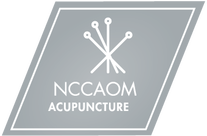|
For centuries, wars have plagued our world and wreaked havoc on its economies pushing them to the brink of collapse and forcing societies and cultures to transform in order to meet the needs of the struggling people. Ways of life have morphed into forms that no longer resemble living. The concept of "being" has been overshadowed by the practice of "doing". We are never not on the move. We are chasing life, running from death, rushing to the next thing, or running from the last thing. We constantly live in the past or in the future. Then, before we know it, we have ticked our last tock. Long life or not, our time has run out. With the passing of each moment, we no longer live in the past. The point of time where we rushed out of bed to rush and make our morning coffee to rush to work to rush home, all the while rushing to retirement and running away from death as fast as humanly possible, we are always on the move. Never stopping...always going. Never being...always doing. Life is meant to be lived and this requires action. But when one moment has passed and another is yet to come, should you fight to run from or towards either of them? Should you let your history define your present? Or should you let your history guide you to your present?
We, and all of existence, are born to live in the "now"; to live in the present. When your day at work has finished and it's time to go home, that day of work no longer exists. It is time for you to go home; to the home where you live physically, to the home where you live mentally, and to the home where you live spiritually.
A long life is by no means symbolic of a good life. Ancient texts that preserve the secret methods of longevity may have been testing the limits of time to see how far they could push them. We will never know their true purpose of this quest, nor what they were afraid of, if anything, that led them to desire the need for longevity. So I can only question their potential desire by asking, what's the point? Why focus on the need to live a lengthened number of days? Why not focus on the most effective ways to live a "good life", a happy life, and a life that exists in the present and nowhere else? Making the choice to live a "good life" is to make a choice to ignore all distractions in your life; eliminate all stressors in your life; erase all dissatisfaction from your life; and ultimately, dismiss all sense of time in your life. Choose "now", and nothing else exists. Not even time, a concept created by humans. The fact that we only get one life to live should be enough reason for us all to make the right choice: the choice to live a "good life" versus a "long life". Enjoy the moment you are in now and I guarantee you that you will forget all about your desire for a long life. That, my friend, is a "good life". And it will win every single time.
0 Comments
Yesterday evening I hosted our monthly Ask The Expert live interview with Jamie Gallagher, founder of Origin Fitness Fairfax and CrossFit Burke. (Listen to the Live Interview Here) At the end of a great interview, I asked him one final question, the same question I close every interview with each month: "What gets you out of bed every morning?" His response? "The pursuit of excellence." Knowing Jamie for some time now, I couldn't agree more with him that this is truly what he looks for each day. But what exactly is the pursuit of excellence? What actually does excellence mean? To answer this question, first ask yourself the same question I asked Jamie during his interview: "What gets you out of bed every morning?" More specifically, what is your purpose in life you are so passionate about that drives you to get up everyday and live every moment to its fullest? The pursuit of excellence is ALWAYS exhilarating! Excellence is built upon the standards you set for yourself because they are the blueprint of your life. If your accomplishments in life do not match your overall blueprint, then how could you possibly achieve excellence? From this blueprint, this innate schematic leading you towards fulfillment, you are driven to use your body in a certain way. You mind is flooded with only certain kinds of thoughts. Your spiritual beliefs tie them all together with what you see as your higher purpose in life. Without these connections, we are just an empty, lifeless shell following the robotic actions of what we were taught that society "needs" from us.
By allowing yourself to not just move against the current, but step out of the water altogether, you allow a transition towards personal freedom. From this moment onward, you understand the power of choice. For in every moment lies a new choice in life; one that can create opportunities no matter what lies before you. Be it negativity, pessimism, or doubt, you know that you can step away from that current and walk in the direction of excellence every single time. Your ability to hold the light as you walk to the end of the tunnel rather that walk towards the light that someone else is holding sets you apart from every other human being. However, the light you hold is actually a light shining from within you that is now so strong it has begun to illuminate outward and requires no holding at all. It is a self-generated luminescence that comes from your heart, your soul, and your newfound ability to unlock your personal potential. I want to warn you though. This is not something I read in an inspiring book or heard on some podcast similar to mine. This is real and this is powerful. How do I know? Because, through experience, this is my life every single day. This is also Jamie's life every single day. Now, do we both stumble? Do we both have our days full of doubts and find ourselves questioning our purpose in life? Darn right we do! But do we ever veer away from the direction we believe to be "right"? Never. No matter the obstacle that appears before us, even if it's in our minds, we look forward to the challenge. Some might even say that I love the game more than the result myself. I might agree with this. That is because the pursuit of excellence is ALWAYS exhilarating! The power of choice determines your understanding of your own potential and your own ability to empower yourself. This is not to be confused with destiny either. Your destiny points you in a certain direction, but it is your daily choice to get up an start your day with a specific mindset; a day that stems from a desire to pursue something. And the goal of this pursuit should be nothing less than the pursuit of excellence. THIS is personal power. THIS is inspiration. THIS is a life of fulfillment. I challenge you from this moment forward to join Jamie and me together in this pursuit; a pursuit of excellence. In the wake of another tragic moment in history where innocent lives have been lost, we find ourselves again in the same position; on our knees both mourning and pleading for answers and change. Knees bloodied, voices strained, we feel lost and confused as to why we constantly find ourselves again and again in this submissive posture. We seek answers. We seek change. We seek safety. The recent and horrific event at a Florida school has called us all to action. Consider this my small drop in the ocean moved by emotional waves of fear, confusion, and loss of life. This offering of a small drop is hopefully enough to temporarily quench our thirst for change. And within this drop is a small reminder of an ancient practice that will hopefully nourish an internal state of ease we all yearn for at this moment. This unimaginable event in Florida has re-ignited an ongoing debate, which I will not continue here as my specialty is health rather than school safety or gun legislation. However, it reminds me of an important ancient practice that can begin to heal our society and potentially prevent events such as these from happening again by focusing internally on the one person we truly have the ability to change; ourselves. The students of this school of thought were able to transform their ways of life and contributions to society in a way that sculpted their culture into a living work of art. You might recall from ancient Chinese society a school of thought called Confucianism. Now, I am not an expert in this school of thought, but I am certainly curious about one specific objective that was the overarching goal in this ancient and wise way of life that has been practiced for more than two millenia. This practice is referred to that of being a Hao Ren (好人) or "good person". By regularly practicing the ethical and humanistic beliefs of Confucianism, the students of this school of thought were able to transform their ways of life and contributions to society in a way that sculpted their culture into a living work of art. In other words, they learned to become good people. Sadly though, these beliefs have slowly disappeared over time and are virtually absent altogether in modern society erasing away our overall sense of humanity.
It is time to resuscitate these practices once again and revisit the basics of humanism and the essentials of life. For in the presence of mass suffering, we are vividly reminded of the emotions that connect us to one another and those that separate us. Hence the reason for people joining together in solidarity aiming and hoping for a similar outcome; in this case, the protection of human life, which will eternally outweigh the desire to protect material belongings, e.g. weapons. This is not an article of blame, nor is it a conversation leading to more pain or destruction. Think of it as an opportunity to expand our wherewithal by beginning with an internal, personal conversation. One leading to the development of self in a positive direction that will ultimately guide the development of others. By embodying the fundamental values of this ancient practice, we can relearn that which has been forgotten. This does not mean you must adopt a new religion and belief system altogether. It is simply a nudge in the direction of positive change and development starting with ourselves as individuals. The Five Constants and Four Virtues are the essential values needed to become a Hao Ren through the lens of Confucian philosophies. And if we were to instill these values within a modern mindset, we could virtually eradicate the suffering we constantly inflict upon ourselves and others. The Five Constants are: Humanity Righteousness Ritual Knowledge Integrity AND The Four Virtues are: Loyalty Filial Piety Contingency Righteousness Of course there exist more values than these alone, but these Constants and Virtues are the essence of our humanity. Practice them religiously and your mind and body will transform. Embody them holistically and the people around you will transform. Exhibit them effortlessly and the world we live in will transform, allowing us to achieve an harmonious level of coexistence and that of a Hao Ren. The painful steps taken to achieve progress in difficult times like these are nurtured by nothing other than the quality of our learned beliefs together with our persistent effort towards living the life of a good person. And I pray that by coming together we can, for the sake of the lives that have been lost, discover our potential of becoming good people long enough that we remain as living examples for all the future generations to come.  Source: Pexels.com Source: Pexels.com Throughout the course of history, there has long been a connection between martial artists and medicine. Traditionally, it was not uncommon to find a martial arts master who was also a physician or, at the very least, a highly-skilled healer. The reason behind this is simple being that by understanding how to control the mind and body in either role, one can also understand how the mind and body control an individual. Probably one of the most famous martial arts masters was Huang (Wong) Feihong who "developed a reputation as a peerless fighter and skilled physician". He also "founded a clinic known as Po Chi Lam, 'Precious Iris Woods', [which was] a reference to his skill with herbal medicine". Another notably skilled martial artist and physician was Hua Tuo, who was arguably the most famous doctor to have lived during the period of the Han Dynasty in China (206 BC-220 AD). As a physician, Hua Tuo would perform surgeries using anesthetics made for herbs. Additionally, he was renowned for his development of a series of health exercises that are based on the movements of animals and the principles found in martial arts traditions (Wu Qin Xi Qi Gong or Five Animal Play Qigong). Marshal Yue Fei, a famous military leader, is another perfect example of martial artist/physician who created the famous Eight Brocades Qigong Exercise. Learn these two famous Qigong forms online via the Personal Mastery and Growth Academy (Contact me for purchase details) Like most things over time, these arts transformed into new styles adapting to the changes of society and the invention of new types of weaponry, e.g. firearms. These transformations, together with the secrecy of familial styles of martial arts, the illiteracy of legendary masters, as well as the Cultural Revolution, slowly divorced these two arts that were once seen as inseparable. In today's society, there is a clear disconnect between martial arts and medicine in both education and in practice. I can recall learning, as part of the curriculum, Tai Chi and Qigong when I attended Oriental Medicine school. At the time, with a background of over a decade of practice in these arts, I entered the classroom with a sense of humility together with an old phrase I heard repeatedly during my training, "Any three people walking, [at least] one of them is your teacher." Needless to say, I was ready and willing to learn. Much to my surprise, upon the completion of the first set of classes, I can still recall the speed at which my jaw hit the floor. I was absolutely dumbfounded by how superficial and dissociated the information was from medicine, let alone martial arts. What happened to the knowledge that had been so powerfully transmitted through the ages of military warfare and medicinal advancement? Given this experience, I unfortunately have anything but high hopes for the remaining programs across the country. Even if the programs are strong in terms of the quality of information being disseminated, there is still an absence of knowledgeable Oriental Medicine practitioners being produced who can utilize martial arts and its principles with a medicinal approach. All disappointment aside, I do have faith that there still exists a strong connection between both martial arts and medicine. How? Simply because when people practice, they notice positive changes in their bodies and their minds. Additionally, the two arts themselves are based in theories and principles that align perfectly together. And personally, as an acupuncturist and a seasoned martial artist, I can see a clear connection between these two and apply them accordingly in my practice. Simply put, martial arts is an exchange between two or more people when being applied, whether fighting or "playing". It is also an exchange between one's external environment and internal environment. Medicine is the art that facilitates these exchanges by correcting them when they cannot be completed innately on their own. The natural laws of these exchanges were discovered through the observation and understanding of nature's affect on the health of living beings. Therefore, by expanding upon this knowledge and applying it, martial artists and physicians can potentially marry these two art forms once again. I suppose the title of this blog could also be reversed: Acupuncturists were also born to practice martial arts. For from the branches of the tree where martial arts and medicine coexist, they feed from the same root, bear the same fruit, and nourish all those who consume it. We as martial artists and Oriental Medicine practitioners are their gardeners as well as their guardians, and their survival depends solely upon us to keep them together. If you would like to learn more about how to use martial arts together with Oriental Medicine, you can contact me anytime via email or social media. You can also join our Tai Chi class on Saturdays or send you kids to our Martial Arts class on Sundays. Reference: Bisio, Tom. A Tooth From the Tiger's Mouth. New York, NY: Fireside, 2004.  Right now, we live in a culture of wasting. We waste water. We waste food. We waste gas. We buy the most unnecessary products, which we end up throwing in the trash most of the time anyway. Do we really need gigantic SUVs that burn less than 20 mpg to carry all your passengers and everyone's waste with it? Does The Cheesecake Factory really need to serve portions that could quite literally feed an entire village for a week? People of the world today are all experts in wasting. And worse, this destructive skill is tearing our world apart. We even have challenges figuring out what to do with our waste.
By covering up our waste, it doesn't mean it will disappear forever, no matter what we build on top of it. Trash cans and landfills are not black holes, but yet we treat them as such. It's kind of like dealing with a problem in our personal lives. Sometimes we just cover it up and hope it will either disappear or resolve itself. Out of sight, out of mind. Right? Wrong. All three of these resources are infinite on a macro scale, but as individuals, they are as finite as life and death. The good news is there are three resources you have complete control of simply by making a decision and sticking to it. These resources are: BREATH ENERGY TIME Since we are experts at wasting material resources, it comes to no surprise that we are also experts at wasting immaterial ones. Therefore, it should be our sole responsibility in life to focus on conserving these three as much as humanly possible. It is easy to waste your BREATH by arguing about something pointless. It is easy to waste your ENERGY by either using too much or by not using enough, the latter of which is more a pity than a waste. And perhaps the worst of all is wasting your TIME, because it can happen at any moment. Especially when we consciously decide to participate in actions or interactions we have no desire to join in the first place. For example, going to a job you completely and utterly hate but continue to go to anyways. Once your resources are depleted, it will be too late. All three of these resources are infinite on a macro scale, but as individuals, they are as finite as life and death. How you use them, and how well you can conserve them, may ultimately determine the quality and duration of your life on this planet. So, I urge you to focus on the important elements of your life; your health, your family, your passion, and anything else that provides you with the ultimate life experience. Because once your resources are depleted, it will be too late. Isn't that enough to make you think twice about how you use your breath, energy, and time? I certainly hope so. Join us for a free 15-minute consultation, a personalized acupuncture appointment, a Tai Chi class, or one of our events as we teach people this month on how to avoid wasting these three life resources. We guarantee you we will stop wasting them if you do. But we can't help you if you don't! So, come on by. We're ready to eliminate all waste!
In case you haven't heard, there is a food craze going on at the moment, and it is growing by the jar! That food craze is all about one dish: Kim Chi. Kim chi (김치), pronounced kim chee, is a staple food in Korean cuisine and is served together with other banchan (반찬), or side dishes, at nearly every meal. On average, a Korean person consumes about 40 pounds of kim chi each year! There are various types of kim chi that can be found throughout the year made from all kinds of vegetables including radishes, cabbage, scallions, cucumbers, and many others. Each of these types of kim chi usually require different ingredients to create specific tastes and consistencies in addition to a long fermentation process. It truly is an art form that has been mastered by the Koreans. Perhaps you have already tried this famous food. But if you haven't, then you probably don't quite grasp the popularity and importance of kim chi and its place in Korean culture. Don't worry, it's okay. Think "ice water" in the United States. At nearly every restaurant you eat at in the U.S., your server almost always brings you a cup of ice water before you eat, whether you want to drink it or not. (Why we all need ice water is beyond me...) This is just a comparison of how common kim chi is at mealtime for Koreans. The difference is that kim chi actually has numerous health benefits as opposed to ice water. Also, kim chi is a great accompaniment to whatever main dish you are enjoying, again, unlike ice water. Many people also enjoy it with rice alone. (These people are hard core Koreans usually!) So, why is it that kim chi is so popular? What benefits does it actually provide? Aside from its distinct taste and smell, like yogurt, kim chi contains a TON of probiotics, such as lactobacilli, that keep your digestive system functioning at its best. It is also filled with antioxidants and carries a little kick from all the ground red pepper flakes it is made with, which contain lots of vitamin A and vitamin C. These are just a few health benefits from a list that goes on and on. In fact, there are even research studies about the effects of kim chi on cancer and other diseases. So, if you want to eat this delicious food, you don't need to travel to Korea to enjoy an authentic version. Visit any of the fantastic Korean restaurants in Northern Virginia, and you can get a little taste of home/Korea. Then you will understand why people love kim chi so much that they even say "Kim Chi" instead of "Smile" when they take pictures!  How to Make Your Own Traditional Kim Chi: If you're interested in braving the process and making your own traditional Kim Chi at home, here's a great place to start. (Recipe courtesy of Korean Bapsang) Ingredients: 1 large napa cabbage (about 5 to 6 pounds), or 2 small (about 3 pounds each) 1 cup Korean coarse sea salt for making kimchi 5 cups of water 1 pound Korean radish 1/4 Asian pear 3 - 4 scallions Seasonings: 1 tablespoon glutinous rice powder* (*Mix it with 1/2 cup water, simmer over low heat until it thickens to a thin paste and cool. Yields about 3 - 4 tablespoons.) 1/2 cup Korean red chili pepper flakes, (adjust to your taste) 1/4 cup salted (mini) shrimp, finely minced 3 - 4 raw shrimp (about 2 ounces), finely minced or ground 3 tablespoons fish sauce 3 tablespoons minced garlic 1 teaspoon grated ginger 1 teaspoon sesame seeds (optional) 1/2 cup water 2 large bowls or pots (7 - 8 quarts) 1 large colander Kitchen gloves 3/4 - 1 gallon airtight container or jar Instructions 1. Cut the cabbage lengthwise into quarters by cutting the stem end in half only about 3 - 4 inches in and then slowly pulling apart to separate into two pieces by hand. Do the same for each half to make quarters. Running the knife through all the way would unnecessarily cut off the cabbage leaves.) 2. In a large bowl, dissolve 1/2 cup of salt in 5 cups of water. Thoroughly bathe each cabbage quarter in the saltwater one at a time, shake off excess water back into the bowl, and then transfer to another bowl. 3. Using the other half cup of salt and starting from the outermost leaf, generously sprinkle salt over the thick white part of each leaf (similar to salting a piece of meat). Try to salt all the cabbage quarters with 1/2 cup salt, but you can use a little more if needed. Repeat with the rest of the cabbage quarters. Pour the remaining salt water from the first bowl over the cabbage. Set aside for about 6 - 8 hours, rotating the bottom ones to the top every 2 - 3 hours. 4. The cabbages should be ready to be washed when the white parts are easily bendable. Rinse thoroughly 3 times, especially between the white parts of the leaves. Drain well, cut side down. 5. Meanwhile, make the glutinous rice paste and cool. Prepare the other seasoning ingredients. Mix all the seasoning ingredients, including the rice paste and water, well. Set aside while preparing the other ingredients in order for the red pepper flakes to dissolve slightly and become pasty. 6. Cut the radish and optional pear into match sticks (use a mandoline if available). Cut scallions into 1-inch long pieces. Transfer to a large bowl and combine with the seasoning mix. Mix well by hand. Taste a little bit. It should be a little too salty to eat as is. Add salt, more salted shrimp or fish sauce, if necessary. If possible, let it sit for 30 minutes to an hour to allow the flavors meld nicely. 7. Cut off the tough stem part from each cabbage quarter, leaving enough to hold the leaves together. Place one cabbage quarter in the bowl with the radish mix. Spread the radish mix over each leaf, one to two tablespoons for large leaves. (Eyeball the stuffing into 4 parts and use one part for each cabbage quarter.) 8. Fold the leaf part of the cabbage over toward the stem and nicely wrap with the outermost leaf before placing it, cut side up, in a jar or airtight container. Repeat with the remaining cabbages.Once all the cabbages are in the jar or airtight container, press down hard to remove air pockets. Rinse the bowl that contained the radish mix with 1/2 cup of water and pour over the kimchi. 9. Leave it out at room temperature for a full day or two, depending on how fast you want your kimchi to ripe. Then, store in the fridge. Although you can start eating it any time, kimchi needs about two weeks in the fridge to fully develop the flavors. It maintains great flavor and texture for several weeks.  "How old are you?" and "How old do you feel?" are two very different questions. They are questions of external versus internal; questions of authenticity versus a pseudo-you; and questions of freedom versus inhibition. Your outward appearance tells a very different story than your inner truth, if you can reveal it. The world around us is surrounded by pointing fingers, lines in the sand, and razor sharp words of criticism. The amount of inflexibility in those who enact these destructive motives grows larger every minute they get older. The physical body, as it ages, changes in similar ways. Muscles get tighter; blood vessels get narrower; synapses in the brain fire slower; and our steps get shorter. It seems like we are heading downhill at an alarming speed as we age. But, as I like to say, that's one way of looking at it. When was the last time you did something your parents told you growing up was either dangerous, difficult, or dirty? Another way of looking at it is as if everyday we are getting younger. How do we do this? With each day your body gets older, you hold on to the young, free-willed, inspiring, and open-minded you. Can you remember one of your most precious and happiest childhood memories? When was the last time you let yourself experience it? When was the last time you skipped down the street? When was the last time you did something your parents told you growing up was either dangerous, difficult, or dirty? Perhaps you tell your own children these things!
If parents, teachers, and adults in general have the most influence on how children grow and develop their own personalities, then what are you doing to maintain your own inner child? Can you access him or her at anytime you want? Could you dance freely in the middle of a busy sidewalk? Could you sing out loud in a big park? Could you make up a song with only silly bathroom words that we yell at our kids for saying? Your experience in life is determined by your ability to enjoy every moment. And if you have a difficult time letting go of your thoughts and beliefs about how life should be or about how other people should act, then your experience is going to be even more of a challenge. So much of a challenge that others will have a hard time being in your presence. My suggestion to you is to awaken your inner child by first focusing on the most enjoyable experiences of your childhood. Close your eyes and re-experience them. Then, find a way to bring them back to life. Re-awaken your inner child by shedding the shrouds of judgement; the expectations of adulthood; and the belief that the good days are behind you. For the best days are ahead of you if you continue to look forward, move freely, and perhaps even dance a little on the way. So, go nudge the little one inside you and tell them it's time to wake up. Don't. Click. Anything. Stop for a second and think. What was the last excuse you made before reading this? Are you about to make an excuse right now so you can get back to Facebook or your email? Stop. Just stop. No more excuses. You've been making them too often and for too long. Excuses lead to regret. Plain and simple. What have your excuses kept you from doing (and ultimately experiencing) in your life? Have you missed countless open doorways that might have led you to a new job, a larger paycheck, or a bigger smile on your face? How would you know? You're too busy making excuses! Right? This, my friend, is the road to regret. And it's staring you right in the face, laughing at you. Excuses lead to regret. Plain and simple. Hence why I'm telling you to STOP. I truly and desperately am working my rear-end off so that I can help as many people as possible live a life without suffering, without regret, and without excuses. Why? Because I know what regret is. I let it be my teacher for such a long time that I've learned my lesson. And now, I regret nothing... absolutely nothing in my life. Every experience, good or bad, is an opportunity just waiting for me to learn from. The same is true for all of us. So what excuse did you make today? What story did you tell yourself so that you can stay on the side of the line where it says comfort? And what are you gonna do about it? The first thing you should do is check out the podcast we just recorded for you (Ep3.5 - Stop Making Excuses) available through the following links. And leave us a comment telling us what excuses you're giving up now that you've read this! We'd love to hear your story! Alexa/Amazon Echo*iTunes PodcastAnchor Podcast Written by José Johnson Written by José Johnson Breathing. We all do it. You’re doing it right now. We do it all the time. But how many times do we think about our breathing? If you are like most people, the only time you think about it is when you are having trouble with it. As a practitioner of the martial arts, healing arts, and brass wind instruments I have experienced first hand how an adjustment to our approach to breath can create profound change. In the study of the Chinese internal martial arts, there is a common saying - “Yi, Qi, Li.” Our “Yi” is our intent. Our “Qi” is our energy. “Li” refers to muscle, or as it is used in this phrase, to our physical actions. The gist of this saying is that all three things must work together. So what does this have to do with breathing? Everything! You see, our breath is directly connected to our state of mind and quality of the movement of our energy and our body. Don’t believe me? Give this a try. Think of something really exciting, like maybe you just won the lottery. Notice how your eyes open wide; notice how you breathe in; and notice that your breath is probably somewhat shallow. Now do the same thing while trying to move slowly. You may be able to do it, but it won’t be easy. Now try the opposite. Think of something sad. Notice how your eyes start to close and how you exhale. You may even feel your body start to slouch. Now do the same thing while trying to move quickly. Again, you might be able to, but it will take a lot of effort. By simply changing how you breathe, So what’s the point of this? Your mind and body want to be on the same page. When one of them gets off track it wants to pull the others along. The cool thing is that breath is the link between the internal world and external world, and by simply changing how you breathe you can change how you think, feel, and move. And our breath goes far beyond our state of mind and quality of movement. It effects our health. All our metabolic functions are important. Our bodies are designed to be this wonderfully complex holistic system. And while these systems are important and act on their own, our breath is the one function that we can consciously control. And it is through our conscious decisions to adjust how we breathe that we can create change in our other functions. How we breathe has a direct effect on our circulatory, digestive, and even our nervous systems. It’s amazing to think how much impact this simple act has on our total health and well-being. So, if you are interested in learning a little more about the basics of breathwork, go to my Personal Mastery and Growth online academy and take my FREE course on Breathing Fundamentals for Qigong. About the Author (See José's full in-person interview on YouTube) José Johnson has been described as a modern Renaissance Man. Jose is an accomplished martial artist, musician, teacher, entrepreneur and change merchant. Jose currently owns and operates Jose Johnson’s Chinese Martial Arts & Wellness Center in Harrisburg, PA. He is also the founder of Integrated Wellness Consultants and in 2017 established the Personal Mastery and Growth online academy. (link above) As a martial artist, José’s accomplishments earned him the honor of being included in the 2008 publication “Extraordinary Chinese Martial Artists of the World” and the invitation to take part of the filming of the 2015 Chinese docu-drama “New Legends of Martial Arts.” As a musician, José has developed a reputation as being one of Central Pennsylvania’s most dependable lead trumpet players and arrangers specializing in funk and R&B. He regularly works with The Impact Band, The Maxwell Project, Gumbo Junk Brass Band, Big Boy Brass and Windish Music & Productions. He is also an endorsing artist for Robinson’s Remedies and Warburton Music Products. José exclusively plays Warburton trumpets, flugelhorns and mouthpieces. Here are a few places where you can find more about Master José Johnson - José Johnson’s Chinese Martial Arts and Wellness Center: www.dowellness.com - José Johnson’s Personal Website: www.josejohnson.com During the recent blasts of cold weather in the Northeast, we thought it would be a great idea to share with you some of our favorite winter, warming foods for cold winter days. Be sure to click the links under each one if you’re not sure how to find it or make it! Enjoy and stay extra warm!!! 1. Turkey Chili (or another meat of your choice) This is one of my favorite go-to foods during the cold winter months. It is SO EASY to put together in the early morning and prepare in a slow cooker. Let it cook in there for a good 6-8 hours, and you’re good to go…with a little cheese on top. We usually forego the sour cream, but we certainly can’t stop you! When it comes to meat, we never go home without it! Sorry vegans and vegetarians…we have some great teeth for chomping on those delicious muscle fibers, and we would hate to see those 4-leggeds perish without a delicious purpose! Bring on the MEAT! Here’s an easy recipe that we absolutely LOVE 2. Korean Honey-Citron Tea There are many types of teas out there that provide countless benefits and vary widely in taste. If you’re like most and you are preparing herbal tea, be careful not to steep it for too long as a bitter tea will quickly dry out your mucous membranes leading to dry airways, which is essentially an invitation to cold viruses and other nasty things that could put you out of commission. If you prefer a “moisturizing” tea, you could try Korean Honey-Citron Tea. Essentially, it’s a whole load of honey mixed with other delicious ingredients, including citron, which is packed full of Vitamin C and is perfect for strengthening you immune system. Just scoop a couple spoonfuls into your favorite mug, add hot water, and enjoy! You’ll feel the delicious tea coat your mouth and throat like a warm internal blanket. Yum! This can be found at almost any Asian supermarket, although we prefer the Korean style sold at your local HMart. Find your nearest HMart here Learn more about Korean Honey-Citron Tea here 3. Korean Ddeok Bokk Gi This is a sensational Korean dish that is a very common street food which people quickly turn to when outside on a cold winter day (or night, which is happily accompanied by a bottle or two of Korean Soju!). It is very easy to whip up in your home kitchen, and trust me when I say the dish is much tastier than my loose English translation: something along the lines of…spicy rice cake with fish cake and red pepper sauce. (The picture does more justice…) Here’s a quick recipe you can follow. Any local Asian grocery store should have all the ingredients you need. Find your nearest HMart here Here’s a great Ddeok Bokk Gi recipe 4. Korean Style Ox Bone Soup Here’s another Korean dish that is fabulous this time of year. The broth is usually prepared in a gigantic pot that fills the restaurant with a thin layer of steam (great for keeping your sinuses moist) and a distinct, delicious smell. The soup is then combined with additional ingredients, typically beef and long scrumptious noodles. You can then add seasoning yourself at the table and chives for color and taste. I prefer to enjoy this with a side of radish kim chi. You can even order a spicy version of this soup, which is perfect if you need a little extra warmth. I guarantee you will leave the restaurant with a full, warm belly and a smile on your face! Here’s one restaurant in NOVA you can try 5. Hot Chocolate Need I say more? Well, maybe a few words...there are so many recipes for doing this on your own, in addition to all the mixes available on the shelves. It’s worth it, though, to give it a shot and make a nice homemade cup of hot cocoa. Here’s one recipe we plan on trying Please share us your favorite recipe(s) in the comments below (if it’s not a secret)! |
Posted here are...inspirational ideas on healthy living through eastern medicine, optimism, and possibility through empowerment. Archives
March 2020
Categories
All
|
HOURS & LocationMondays-Thursdays 5:30-6:30pm (Tai Chi & Qigong only)
Fridays 5:00-6:00pm (Tai Chi & Qigong only) Saturdays 1:00-6:00pm (Acupuncture only) |
CONTACT Us |





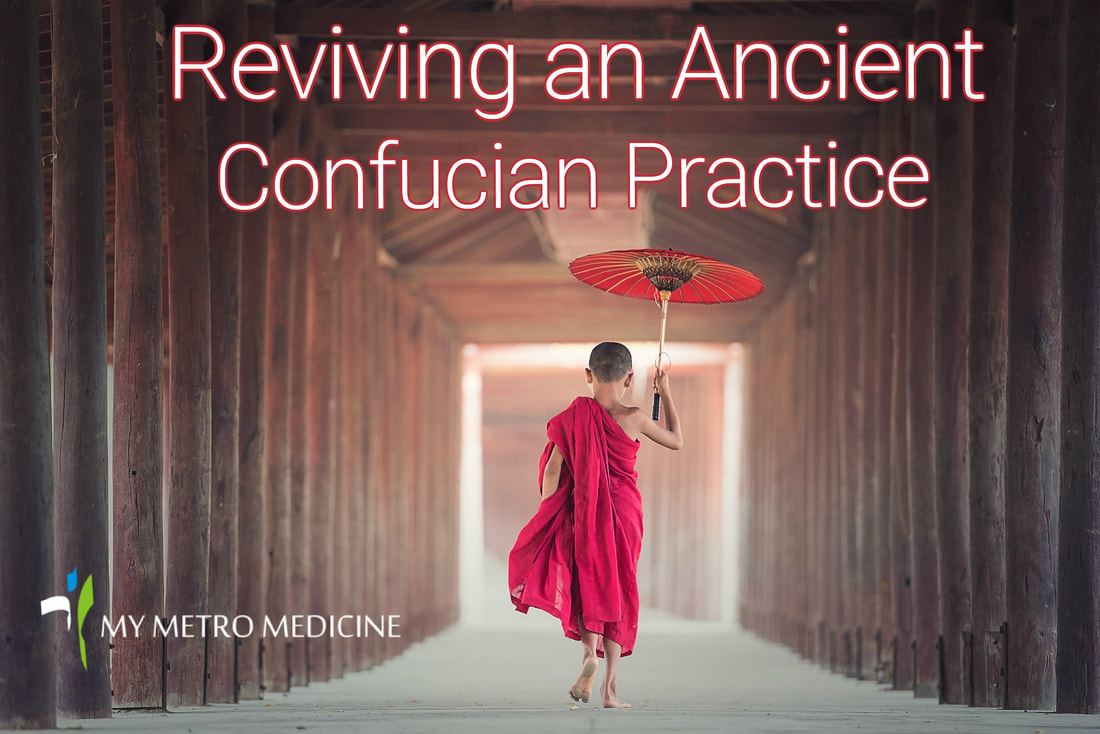









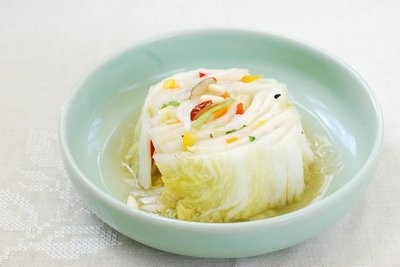




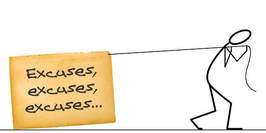


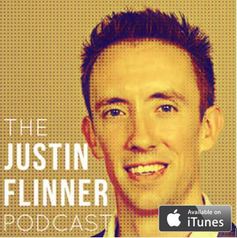


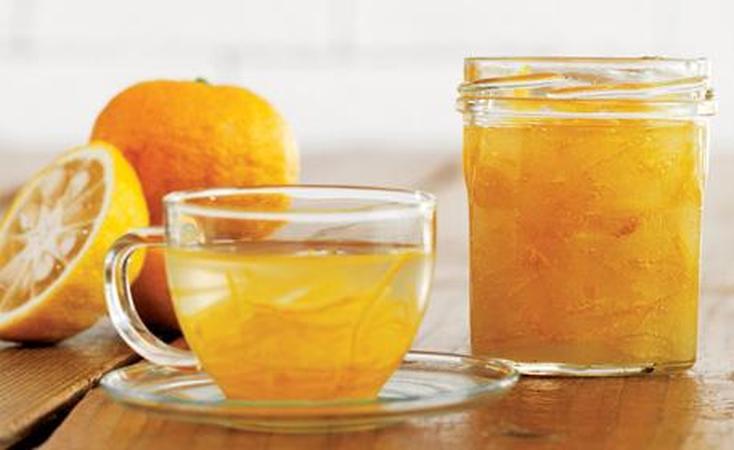



 RSS Feed
RSS Feed



